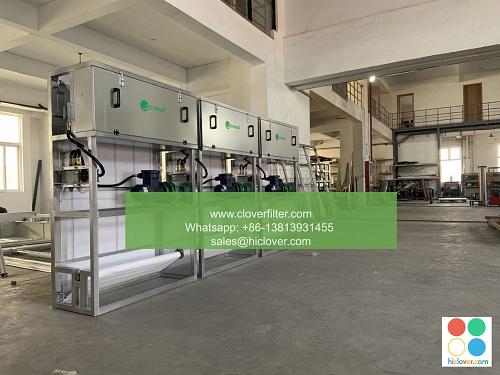The Role of Air Filters in Reducing Gases and Volatile Organic Compounds (VOCs)

Indoor air quality is a critical aspect of maintaining a healthy and comfortable living or working environment. One of the key factors affecting indoor air quality is the presence of gases and volatile organic compounds (VOCs). These airborne pollutants can emanate from various sources, including building materials, furniture, cleaning products, and outdoor air pollution. The role of air filters in reducing gases and VOCs is multifaceted and vital for minimizing health risks and promoting a clean indoor environment.
Understanding Gases and Volatile Organic Compounds (VOCs)
Gases and VOCs are organic chemicals that have a high vapor pressure at ordinary room temperature. Their sources are numerous, ranging from indoor activities like cooking and cleaning to the off-gassing from carpets, adhesives, and paints. VOCs can cause a variety of health problems, including respiratory issues, headaches, and in severe cases, neurological damage. Therefore, their reduction and control are essential for maintaining good indoor air quality.
The Mechanism of Air Filters in Reducing Gases and VOCs
Air filters play a crucial role in capturing particulate matter and gases, including VOCs. The most effective air filters for reducing gases and VOCs are those that incorporate activated carbon or other gas-absorbing materials. These filters work by attracting and retaining gas molecules, thus preventing them from being recirculated back into the indoor air. High-efficiency particulate air (HEPA) filters are highly effective against particulate matter but may not capture gases and VOCs unless combined with an activated carbon component.
Application Areas for Air Filters in Reducing Gases and VOCs
The application of air filters in reducing gases and VOCs is widespread and includes various settings:
- Residential Applications: Homes, especially those with tight insulation, can benefit significantly from air filtration systems. These systems help in reducing the concentration of VOCs emanating from household products, furnishings, and construction materials.
- Commercial Settings: Offices, schools, and shopping centers can improve indoor air quality by installing air filters that target VOCs. This is particularly important in areas with high occupancy rates or where certain activities (like printing or painting) may release significant amounts of VOCs.
- Healthcare Facilities: Hospitals and other healthcare facilities require high standards of indoor air quality to protect patients, staff, and visitors from airborne pathogens and pollutants. Air filters that can reduce VOCs are an essential component of their ventilation systems.
- Industrial Applications: In industrial environments where manufacturing processes release VOCs, the use of appropriate air filters can help in controlling exposure levels and improving worker health and safety.
Technological Advancements and Future Directions
The technology behind air filters is continuously evolving, with advancements aimed at improving efficiency, reducing maintenance, and enhancing the removal of a broader range of pollutants. Some of the recent developments include:
- Nano-fiber Filters: These have shown promise in capturing smaller particles and potentially VOCs more effectively than traditional filters.
- Biological Air Filters: These utilize living organisms to break down VOCs and other pollutants, offering a sustainable and efficient method for air purification.
- Smart Air Filtration Systems: Integrated with sensors and AI, these systems can detect pollutant levels in real-time and adjust filtration accordingly, maximizing efficiency and minimizing energy consumption.
Conclusion and Recommendations
In conclusion, air filters play a pivotal role in reducing gases and VOCs, thereby improving indoor air quality. Given the diverse sources of VOCs and their potential health impacts, it is crucial for individuals and organizations to consider the installation and regular maintenance of air filtration systems. By understanding the different types of air filters available and their applications, consumers can make informed decisions to create healthier indoor environments. As technology continues to evolve, we can expect even more effective solutions for mitigating indoor air pollution, emphasizing the importance of staying updated with the latest developments in air filtration technology.
It looks like you didn’t include a prompt! Please go ahead and provide one, and I’ll do my best to respond. What’s on your mind?

